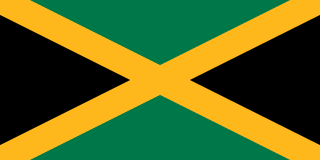
Kingston is the capital and largest city of Jamaica, located on the southeastern coast of the island. It faces a natural harbour protected by the Palisadoes, a long sand spit which connects the town of Port Royal and the Norman Manley International Airport to the rest of the island. In the Americas, Kingston is the largest predominantly English-speaking city south of the United States.

Jamaica is a middle-class neighborhood in the New York City borough of Queens. The neighborhood is part of Queens Community Board 12, which also includes Hollis, St. Albans, Springfield Gardens, Baisley Pond Park, Rochdale Village, and South Jamaica. Jamaica is patrolled by the 103rd and 113th Precincts of the New York City Police Department.
The Jamaica national football team is controlled by the Jamaica Football Federation (JFF), the governing body for football in Jamaica. A member of CFU and CONCACAF, Jamaica has won the Caribbean Cup six times, with their latest win being the 2014 Caribbean Cup when they beat Trinidad and Tobago in the final. Jamaica finished as the runner-up in the 2015 and 2017 editions of the CONCACAF Gold Cup, which was their best performance in the competition; losing to Mexico and USA.

The erebid moth Ascalapha odorata, commonly known as the black witch moth, is a large bat-shaped, dark-colored nocturnal moth, found from Brazil to the southern United States. It is the largest noctuid found in the continental United States. In the folklore of many cultures in Latin America and the Caribbean, it is associated with death or misfortune.

The Dalceridae are a small family of zygaenoid moths with some 80 known species encompassing about one dozen genera mostly found in the Neotropical region with a few reaching the far south of the Nearctic region.
Evergestella is a genus of moths of the family Crambidae. It contains only one species, Evergestella evincalis, which is found in Florida, as well as on the Cayman Islands, Cuba, Puerto Rico and Jamaica.
Ophisma tropicalis is a moth of the family Noctuidae. It is found in tropical and subtropical America, from the south of the United States to Uruguay, including Brazil, Guadeloupe, Martinique, St. Kitts, Montserrat, St. Vincent, Grenada, the Greater Antilles, Cuba, the Dominican Republic, Jamaica and Colombia.
Antiblemma rufinans, the live oak antiblemma, is a moth of the family Noctuidae. It is found in dry, sandy woodlands, barrens, and scrub forests of the southern Florida Plain. It is also present in South America, Cuba and Jamaica.

Fissicrambus profanellus is a moth of the family Crambidae. It is found in the southern part of the United States, the Caribbean and Central America.
Terastia meticulosalis, the erythrina twigborer or erythrina borer, is a moth of the family Crambidae. It has a wide distribution. In North America, it has been recorded from south-eastern Arizona, southern Texas, Louisiana and Florida. It is also present in Jamaica.
William Schaus was an American entomologist who became known for his major contribution to the knowledge and description of new species of the Neotropical Lepidoptera.
Jocara majuscula is a species of snout moth in the genus Jocara. It was described by Gottlieb August Wilhelm Herrich-Schäffer in 1871, and it is found in California, Florida, Central America, Cuba, Puerto Rico and Jamaica.
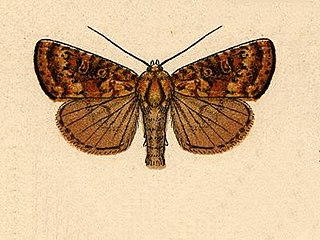
Perigea xanthioides is a moth of the family Noctuidae. It is found from Canada to Brazil and on Jamaica.
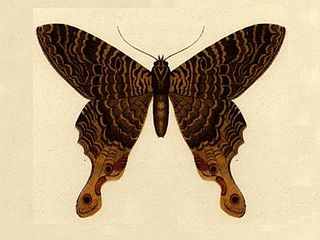
Mania aegisthus is a moth of the family Sematuridae. It is found in Jamaica, Haiti and Surinam.

Ptichodis herbarum, the common ptichodis moth, is a moth in the family Erebidae. It is found in the United States. It has also been recorded from Jamaica.
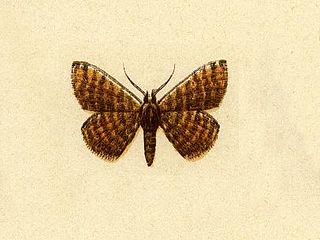
Leptostales phorcaria is a moth of the family Geometridae. It is found on Puerto Rico, Hispaniola, Jamaica, the Bahamas and St. Vincent.
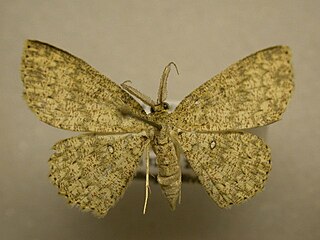
Cyclophora urcearia is a moth of the family Geometridae. It is found from Mexico to Paraguay and on Jamaica and in Trinidad.
Psychonoctua personalis is a moth in the family Cossidae. It was described by Augustus Radcliffe Grote in 1865. It is found on Cuba, Jamaica, Hispaniola and Puerto Rico.
Glaphyria bilinealis is a moth in the family Crambidae. It is found in Cuba, Jamaica, Puerto Rico and on the Virgin Islands.



